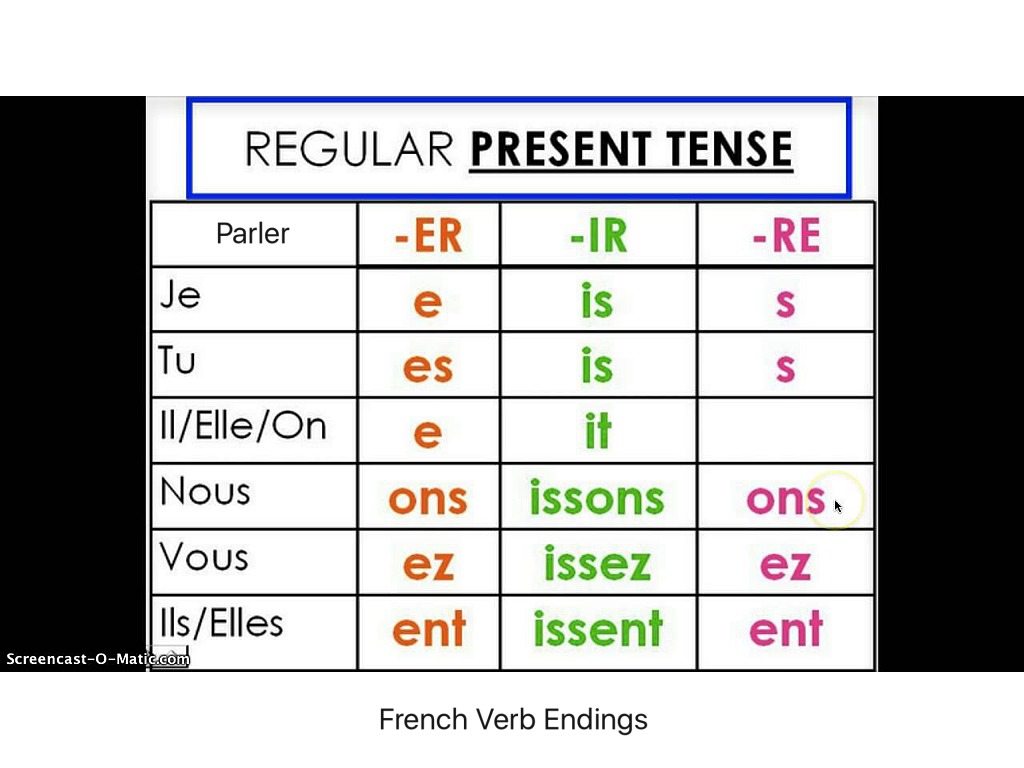

The above covers the simple tenses of the 3rd group of verbs.

CHECK OUT JENNIFER’S FRENCH COURSE FOR SELF LEARNERS.
#French imparfait endings how to#
In this section we’ll cover some of the contexts where we’ll use imparfait French rather than the pass compos, with plenty of examples. How to conjugate limparfait - Imparfait endings: Conjugating verbs ending in -er: aimais ait ions Conjugating verbs ending in -ir: finissais ssait. They all give rise to different roots that change according to the tense.Īdded for illustration purposes: fuir => tu as fui lovelearninglanguages MaA2 LEVEL FRENCH LESSONS French imperfect tense, French imperfect tense endings, French imperfect tense examples, How to form the imperfect tense. L’imparfait is a form of past tense in French mainly used to describe continuous actions, repetitive actions, or existing states.
#French imparfait endings plus#
In this case, the endings can still be easily summarized.Īdded for illustration purposes: faire => ils fontĪll tenses of the subjunctive are introduced by a “que” conjunction (e.g. Limparfait takes the stem of the infinitive plus the endings ais, ais, ait, ions, iez, aient, while le conditionnel consists of the future stem + imperfect. Step 2: Add the ending that corresponds to the appropriate tense and person. parler) however irregular verbs require the. Most verbs are regular and can be entirely determined by their infinitive form (ex. The root has disappeared and is now unrecognizable. French conjugation refers to the variation in the endings of French verbs ( inflections) depending on the person (I, you, we, etc), tense (present, future, etc) and mood (indicative, imperative and subjunctive). In the first person of the present tense, for example, I want is “Je veux“.

In the case of vouloir, you might think the root would be voul-… but not so. We'll use vouloir/to want, prendre/to take, ouvrir/to open as examples. Here are the imperfect endings and conjugations for the regular verbs parler (to speak) and finir (to finish), the -ier verb tudier (to study), the spelling. Remove the ending from the infinitive form. Step 1: Take the French verb from the third group. In terms of endings, the table below summarizes all the endings for group 3 (but not the changes of the roots). Once you learn what that verb is for each sub-group, and learn its conjugation, you will have the master keys to rule them all. Fortunately, as explained in a previous learn French grammar lesson, the conjugation of many of these verbs follow the conjugation of a “master” verb in each sub-category. The only way to truly learn the conjugation of the French verbs in this group is to go over all of them. Not because of the way they end (that's tricky enough), but because in many cases the very useful root we've been using for the other 2 verb groups changes into forms hard to recognize by non-French speakers. French verbs of the third group are very (very) tricky to conjugate.


 0 kommentar(er)
0 kommentar(er)
